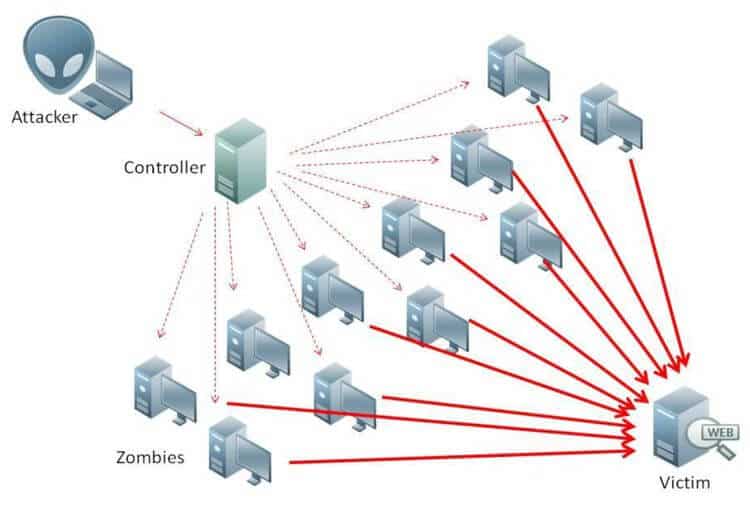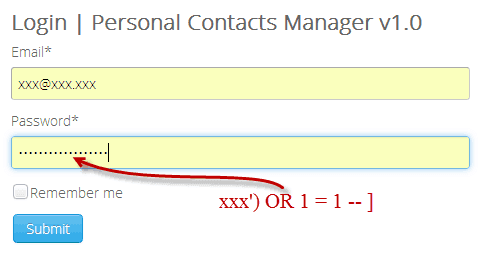Do you use the internet? Guess is you do. Then you must have come across news such as hackers stealing data and bringing down services & websites. Here are some online exam hacking techniques hackers generally use.
1. Social engineering (Phishing, Baiting)
Contents
Phishing is a method where the attacker replicates the original website and then leads a victim to use this fake website rather than the original one. Once the victim enters their credentials into this website, all details are sent to the attacker. This method can be used to obtain payment information such as credit card data or personal information such as login credentials to important accounts and websites.
Another type of social engineering is the ‘bait and switch’ attack. In this hacking technique, attackers buy advertising spots on trustworthy and popular websites and put up seemingly legit ads. Once the ads are launched, users click on it only to find themselves inside a website that is filled with malware. These malware gets installed on the victim’s system and then the attacker has a free run within their system

2. DDoS attacks
Distributed Denial of Service (DDoS) is mainly used to bring down websites by crashing their servers. Attackers flood the servers of the targeted website with the help of zombie computers or botnets. This overwhelms the resources of the servers and it crashes. In several cases, this attack was also used to steal user information by freezing the user forms. The recent DDoS attack on GitHub is an excellent example of how severe these attacks can be.

3. Code injection attacks
Code injection is the general term used for attacks that include injecting malicious codes into systems. Whenever there is improper handling of input data, it becomes vulnerable to code injection attacks.
These attacks are possible when input or output data is not properly validated. Once an attacker is able to inject their code into the system, they can compromise the integrity and security of the system. These attacks can also be used as a way to launch further attacks since the system is already infected and thus vulnerable.
4. SQL Injection
This attack majorly exploits vulnerabilities in a website’s SQL libraries or databases. In case a website has any such vulnerability, hackers can use simple SQL codes to obtain information and data from the databases.
- Web Developer Roadmap in 2024
- Free USA Ethical Hacking Course for Beginner
- Facebook Ethical Hacking Complete Tutorials Free for Beginner: Learn Online Hacking Course 2022
- SSTI (Server Side Template Injection)|Detect|Idenfify|Exploit
- Explore Hackthebox Walkthrough
- PowerShell for Pentester: Windows Reverse Shell
- How Hackers Access Using IDOR | How To Find | Examples » TechNoCP
- TODAYZOO PHISHING KIT USED TO SWIPE MICROSOFT CREDENTIALS » TechNoCP
- Information Gathering – First Step Of Hacking » TechNoCP
- Sensitive data of 400,000 German students exposed by API flaw » TechNoCP
These simple codes trick the system into considering them as legit queries and then give access to its database.

5. XSS attacks
Also known as Cross-Site Scripting attacks, in this type of attack, hackers inject malicious code into a legit website. When a visitor enters the website and uses their credentials, all data is stored within the website, which the attacker can access anytime. These attacks can be effectively used to steal user data and private information.
There are two types of XSS attacks, stored XSS attacks and reflected XSS attacks. In stored attacks, the infected script is permanently kept in the server. And the attacker can retrieve it anytime. In reflected attacks, the scripts are bounced off web servers in the form of warnings or search results. Since this makes the request look authentic the website processes them and gets infected
6. Exploiting plugin vulnerabilities
If you use WordPress then you must be familiar with plugins (extensions & modules in case of Magento & Drupal respectively). Plugins are considered as the most vulnerable parts of a website. Any outdated or unsecured third-party plugins can be exploited by attackers to take control of your website or bring it down altogether. The best way to stay safe is to always use plugins from trusted sources and always keep your plugins updated
7. Brute force
In this hacking technique, the attackers try multiple combinations of the password until one of the combination matches. This method is simple to execute but requires huge computing power to implement.
Longer the password, tougher it is to guess using brute force. Sometimes, attackers also use dictionaries to speed up the process
8. DNS Spoofing
By using DNS spoofing attacks, attackers can force victims to land on a fake website. This is done by changing the IP addresses stored in the DNS server to an address that leads to the attacker’s website. DNS cache poisoning is the process by which the local DNS server, with the infected server. Once the victim lands on the fake website, the attacker can infect the victim’s system with malware and use other website hacking techniques to cause further damage.
9. Cookie theft
As harmless as it sounds, this attack can effectively steal all your important data. During browsing sessions, websites stores tons of cookies on your computer. These cookies contain a lot of sensitive information, including your login credentials such as your passwords or even your payment data. If the attackers get their hands on these cookies, they can either steal all this information or use it to impersonate you online.
The above attacks are generally used against some vulnerability which the attackers exploit. That is why it is crucial to keep updating your software & other systems.
Once a vulnerability is discovered it is necessary to patch it up before an attacker exploits it to cause harm. Ethical hackers and security researchers around the globe try to discover such security gaps to ensure they are fixed.



